Inside: Spark new interest and increase engagement in your kindergarten play based centers, by discovering 3 easy ways to add new materials.
Keeping Play Based Centers Going
Maintaining play centers can be extremely overwhelming, especially if your system includes putting out new centers every day or week.
You want these centers to be inviting and for children to be highly engaged, but not at the expense of your time and energy.
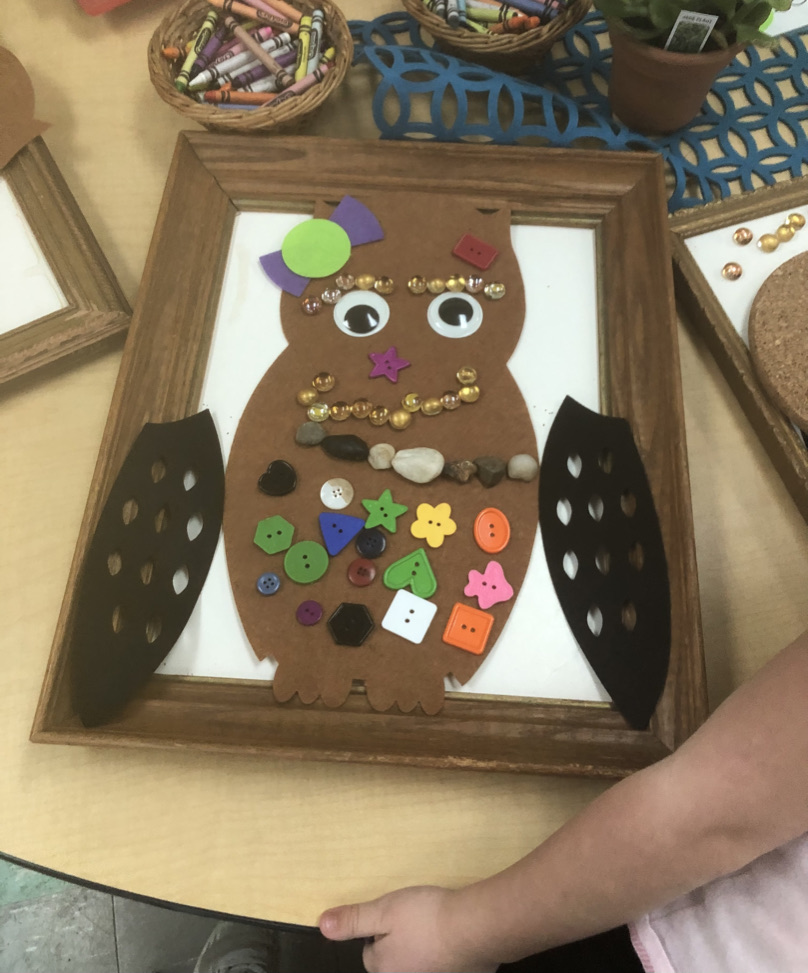
Setting up centers that provide choices, along with open-ended invitations, can be easier to manage, more engaging, and require that materials be changed out as needed, rather than in a time-bound way.
Kindergarten Play Center Invitations
Adding new materials to your kindergarten play centers can be thought of as an “invitation,” rather than an activity or task. An invitation is meant to invite children in, entice them to act, and spark curiosity and interest.
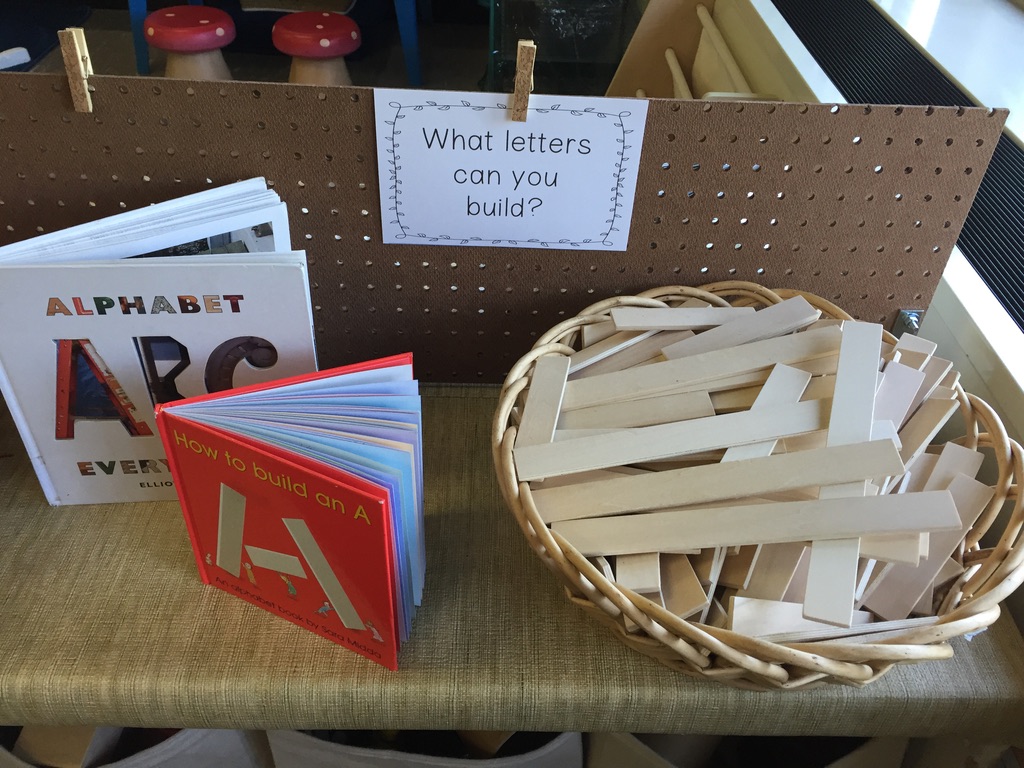
Creating new invitations for your kindergarten play centers doesn’t have to be difficult. In this post, I’ll show you 3 ways, that you can regularly add new materials to your play centers, using “invitations” that flow naturally from your units, projects and everyday life.
3 Types of Play Based Invitations
Ongoing Invitations
When you first set up your centers, choose a few materials that will stay in each center all year long. These will be your high-interest staples, that sustain the center, even when you have nothing new to add.
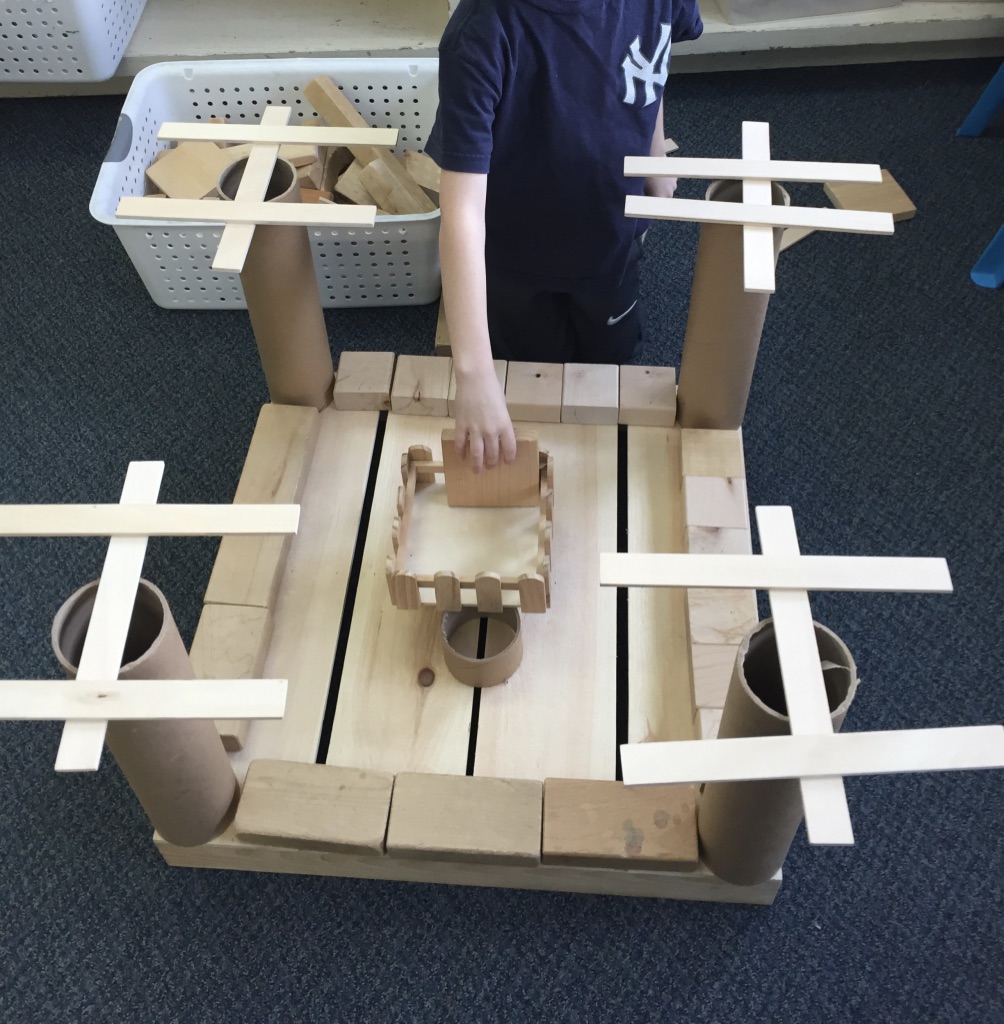
Here are some suggestions for ongoing Invitations that you might place in your play centers at the beginning of the year.
Math Center: puzzles, Unifix Cubes, and Pattern Blocks
Block Center: set of wooden unit blocks, cardboard cylinders, and loose parts (i.e. acrylic gems, tiles, shells, etc.)
Science Center: animal figures, rock collection, and tree blocks
Storytelling Center: people figures, blocks, felt mats
Writing Center: My News templates and Directed Drawing and Labeling papers
Makerspace: Legos and one Building Challenge (i.e. straws and pipe cleaners)
Art Center: stencils, colored pencils, paper, and crayons
Some of these ongoing invitations, such as those offered in the writing center, might be offered all year, but changed out to reflect growing writing skills (i.e. adding more lines to their My News writing) or seasonally (i.e. adding new sets of directed drawing and labeling papers each season).
Intended Invitations:
There are units or projects that you will plan to do every year. Each of these provides opportunities for new materials to be added to your centers.
Look closely at your curriculum map. Are there materials that you will be using as part of your lessons that can then be placed in centers for children to use? For example, if you will be doing an author study on Mo Willems, you might make his books and character props available in the storytelling center.
Or if you are learning about 3D shapes in math, you might place the solid shapes in the math or art center with an invitation to trace the face on each shape.
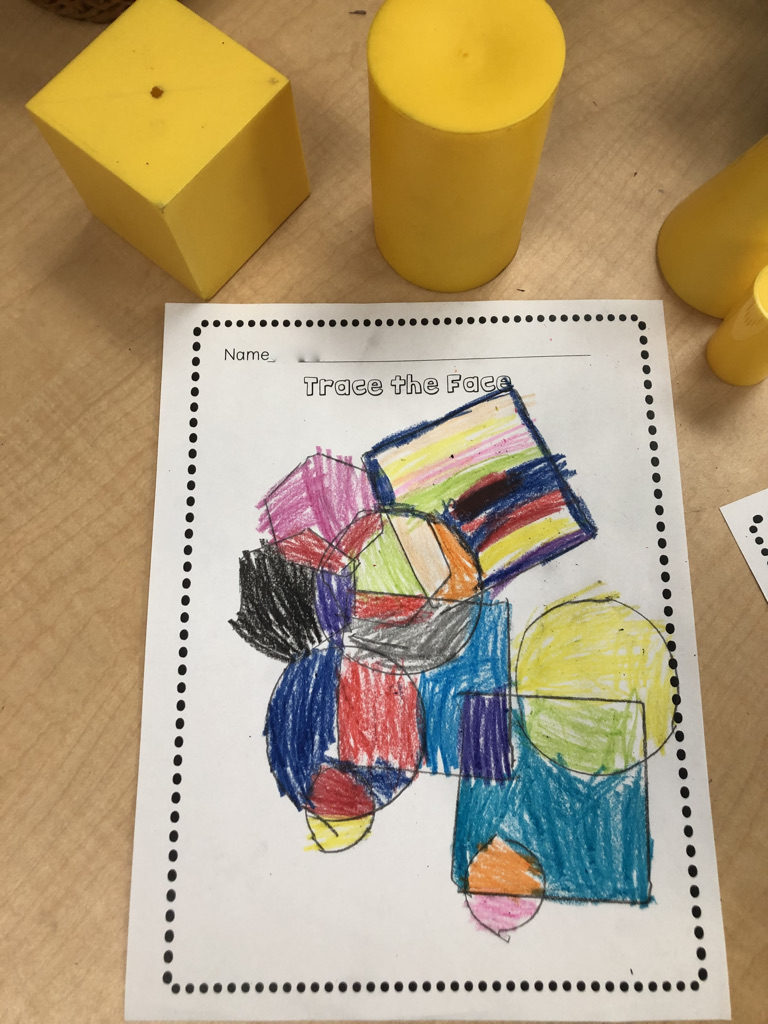
These intended invitations can be included in your unit or project planning by listing each topic and then brainstorming relevant, open-ended materials that could be added to your centers.
The great thing about most of these invitations, is that they usually require very little extra work. You are just taking materials that you are already using for lessons and putting them in the hands of the children.
Emergent Invitations:
These are the unplanned invitations that emerge from daily life with children in your kindergarten classroom. They bring the outside world in and allow children’s ideas and interests to find their way into your centers. Here are some examples.
A child shows up with a bag of acorns she found in her yard. You place them in the science or math center for children to count, sort, weigh, and explore.
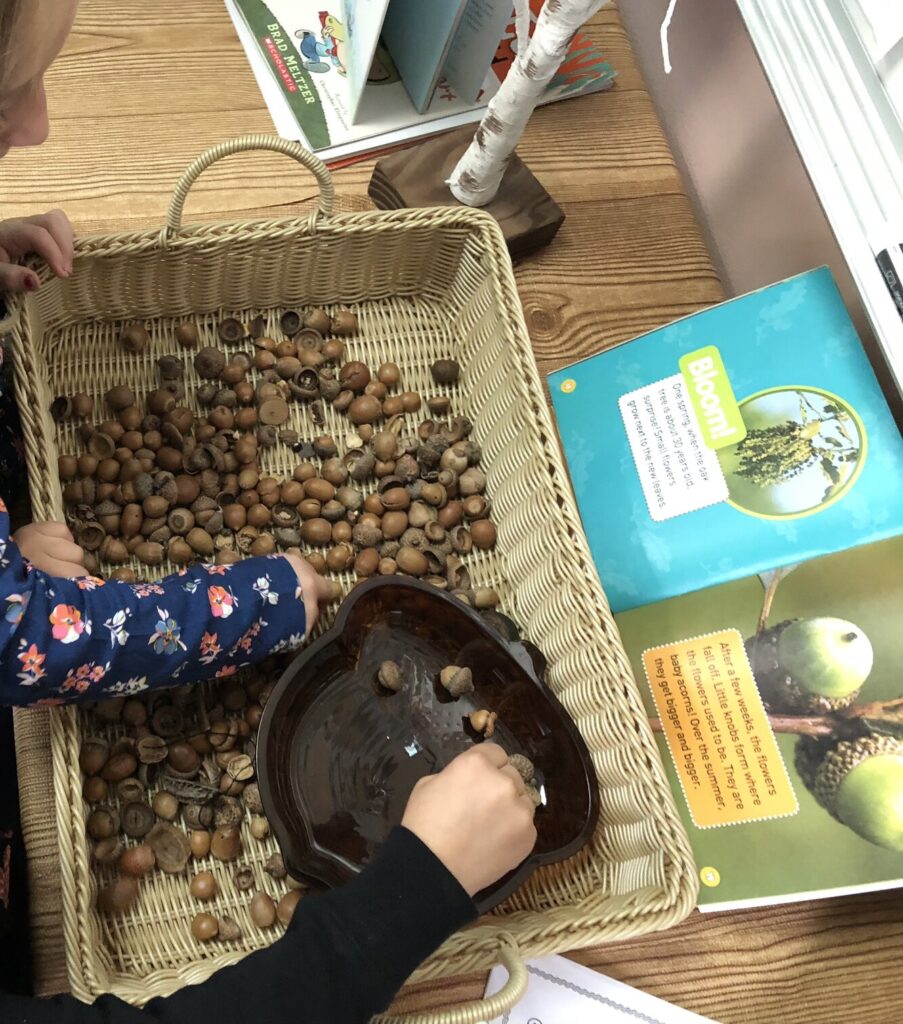
You discover a worm in the parking lot on your way into school one morning. You and the kids work together to make a temporary habitat. You set up a worm research corner in the science center, that includes books, paper to draw worms, and an observation sheet.
A second grade teacher invites your class to a butterfly release party. The kids really enjoyed the experience and are curious about the butterflies. You set up invitations to paint the butterflies in the art center and add some books and plastic butterflies to the science center.

Kids are repeatedly building castles in the block center. You add some “royal” figures and silver and gold loose parts to support this interest.
Children begin to use shapes in the math center to create paths. You add dice, spinners, and “pawns” and invite them to create their own game boards.

Be on the lookout for these invitations, but don’t feel that every one that comes your way needs to be acted upon. Once you start looking, you’ll see ideas everywhere.
More Play Based Center Tips and Tricks
Keep in mind that it is sometimes better to have less choices than too many. Working with the same materials for a period of time invites children to think divergently and be creative.
To keep the centers neat, choose one center per week to “tidy.” Involve the children in helping you maintain and clean the center. This system also gives you an opportunity to evaluate the materials you are currently offering and decide whether old invitations need to be removed and new ones added.
Let the introduction of new invitations flow naturally from whole or small group lessons. After reading a book to the class, “invite” them to retell the story in the storytelling center. As you teach children about temperature and using a thermometer, place some thermometers in the science center for them to explore. If children have been taught how to play a new math game during a small group lesson, make it available in the math center for children to continue playing.
Kindergarten Play Centers Made Easy
Utilizing these three ways of adding materials to your centers, means you don’t have to be responsible for adhering to any kind of rotation schedule. Yet, you still have a solid plan for continuing to maintain novelty and interest in your centers.
For more ideas on using choice time and play centers in your classroom, check out these resources:
Why I use Choice Time Centers in My Classroom
Room Tour: 7 Favorite Play-Based Centers for Choice Time
Launching Choice Time Centers at the Beginning of the Year
Discovery Center Set-Up Guide Bundle
Discovery Center Activity Bundle
And download this FREE set of Discovery Center Month-By-Month Calendars, that will help you plan a variety of activities for 7 developmental centers. Each calendar is color-coded by center, includes 25 ideas for each month of the school year, and has clickable links for each activity.
And for more kindergarten goodness, check out the Roots & Wings Resource Library.



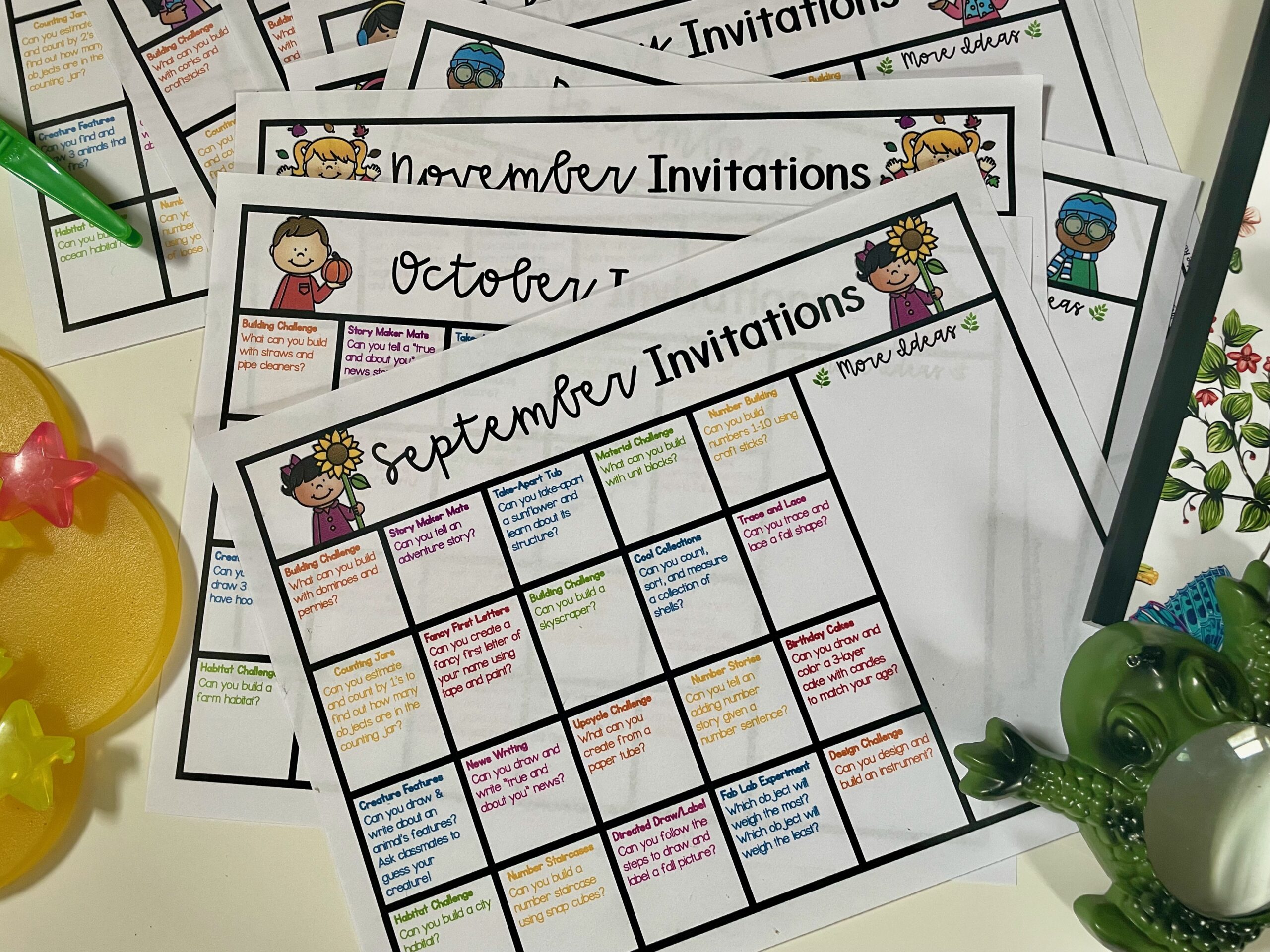
 My Biggest Challenge with a Classroom Makerspace
My Biggest Challenge with a Classroom Makerspace Exploring Precipitation (and Going Deeper with Snow!)
Exploring Precipitation (and Going Deeper with Snow!) A Fall Nature Walk: Before, During, & After Activities
A Fall Nature Walk: Before, During, & After Activities Our Bald Eagle Research Project
Our Bald Eagle Research Project